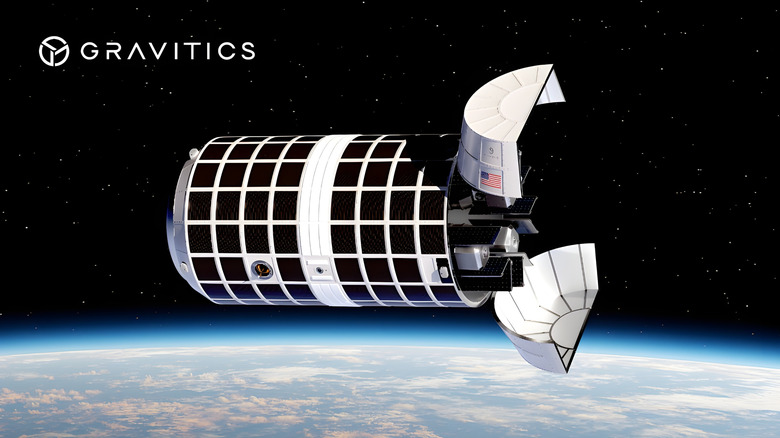Here's What We Know About The US Space Force's Concept Orbital Aircraft Carrier
The United Space Force has entered into a partnership with Gravitics, a startup based out of Seattle Washington to develop the first spacecraft carrier platform ever, described as an "Orbital Carrier." The audacious project is funded through a SpaceWERX Strategic Funding Increase (STRATFI) award worth up to $60 million and aims to create a pre-positioned launch platform to operate within Earth's orbit. According to Space.com, the Carrier would have the ability to transport and deploy multiple maneuverable spacecraft directly from orbit, providing Space Force with a rapid-response option when replacing or supplementing satellites in important missions.
The benefit of having a carrier already in orbit means that it won't be affected by any of the usual ground-based scheduling constraints or weather-related delays like with traditional satellite launches from Earth. Despite only being in the developmental stages, the concept maintains Space Force's focus on tactically responsive space operations, with a plan to reduce the time between identifying any needs and promptly deploying an operational spacecraft into service. As of now, no public time frame has been announced for demonstration or deployment so far.
Purpose and strategic context
As an attempt to control space like never before, the goal of the Orbital Carrier is to boost the United States ability to quickly respond to threats or potential gaps in its satellite network. As outlined by Gravitics, the platform could deploy satellites or other payloads within hours of a decision, without waiting for launch vehicle preparation on the ground, further enhancing Space Forces prior tactical response goals like with the 2023 VICTUS NOX mission, which launched a payload less than 27 hours after receiving orders.
The orbital carrier concept will also tie into ongoing work like the VICTUS HAZE program, a U.S. Space Force mission scheduled to prove in-orbit maneuverability and threat response abilities. Staging a deployment platform like this, Space Force could dramatically increase its operational strength against satellite sabotage or unexpected issues. By being able to get communications, navigation or surveillance functions back online fast, the U.S. is hoping this move will give them a strategic advantage when it comes to contested space environments.
Reactions, challenges, and the unknown
Even though Space Force and Gravitics have maintained that the system is for defensive and logistical purposes only, reactions from the international community have still been met with some resistance. There have been serious concerns from China and Russia, with articles from the Chinese military outlet stating that this will escalate an arms race and encourage other countries to take defensive actions. It goes on to say that it has a real possibility of intensifying military competition in outer space, ultimately destabilizing space security.
France and the EU have said that there needs to be international rules in place for space to prevent it from leading to more conflict. India expressed its concern as well saying they believe space exploration should be a peaceful venture according to its ISRO Indian space policy. There are no answers yet on the technical aspects of the Orbital Carrier such as payload capacity, methods for orbital assembly or servicing. Beyond the initial investment, total completion costs haven't been released yet either.


